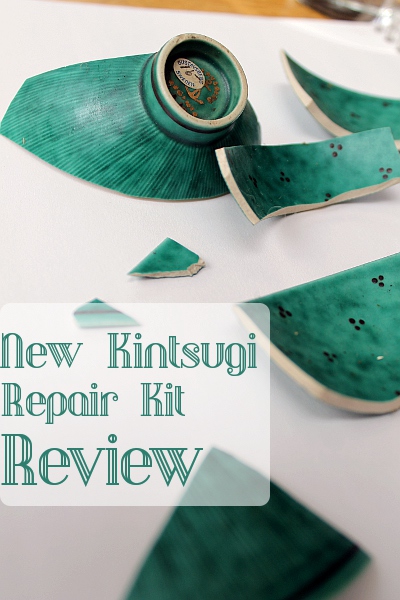In which the artist ponders the nature of imperfection
Oh my dears, it’s been a staggeringly disorganised April.
Nothing too dreadful, but between chicken pox and a long-awaited holiday I didn’t get much of anything on my list finished.
We did have a perfectly spiffing time learning about dinosaurs (oh so many dinosaurs), hiding the afikomen (I was so successful that I just received an email from my dad asking where it was because he was worried about ants finding it before he did) and getting out of Dragon’s way so he and his grandparents could have popcorn parties (the fact that we happened to go to the cinema and ballet was entirely by the by, you understand) but my best laid plans of scheduling all my blog posts before I left didn’t really pan out.
So here’s the final installment of the Humade New Kintsugi Repair Kit experiment as well as a hope that May will be more organised. There’s an introduction to the concepts of kintsugi and wabi sabi here, and you can buy a kit of your own from Humade here.
Humade New Kintsugi Repair Kit Review
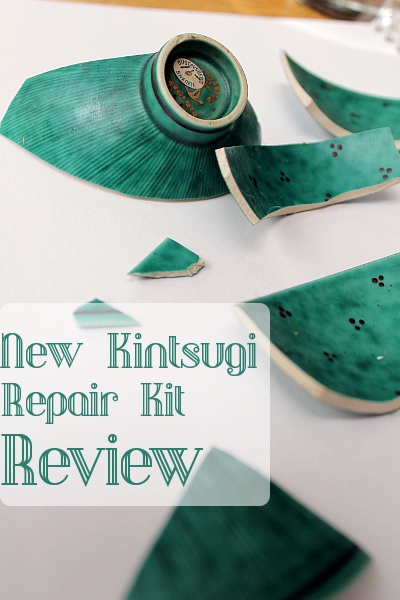
I like to consider myself good at directions – I read them, I absorb them and I sometimes choose to ignore them but I prefer to do so on an informed basis.
There were two sides of the instruction manual which came with the kit, one side were the technical specifications of the various glues and epoxies and the other was an illustrated guide to the process.
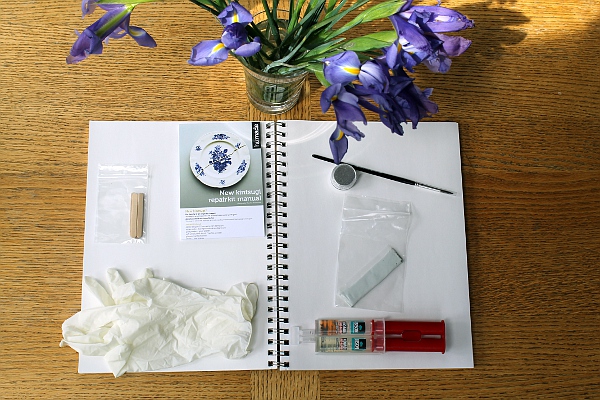
I skimmed the technical sides, mainly for information about clean up and safety warnings. Then I got my pot shards out and, with the illustrated side out for reference, I began.
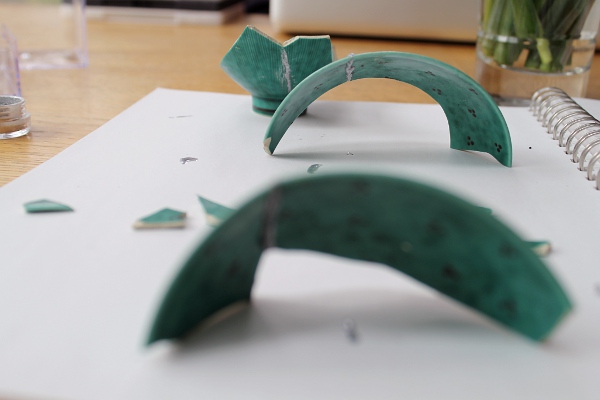
For a while it all seemed to be going very well, I got a few large pieces together and I was just waiting for the ‘few minutes’ it took for them to set before I was going to get started on the next pieces. There was even time for the Lovely Young Man and sometime photographic assistant to take some photos of me at work.
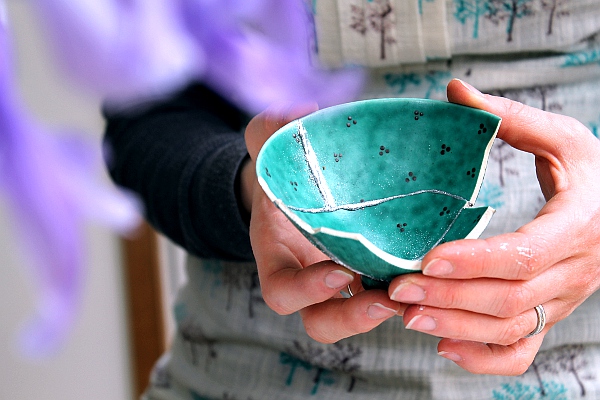
Then it fell apart – rather literally. On further examination of the difficulties, it appears that by ‘a few minutes’ (lovely illustrated instructions) they meant ’20 minutes. Curing time 1 hour’ (technical specifications). Deep breath, change of plan from an afternoon’s diversion to a half an hour every day until it was finished or I threw it across the room.
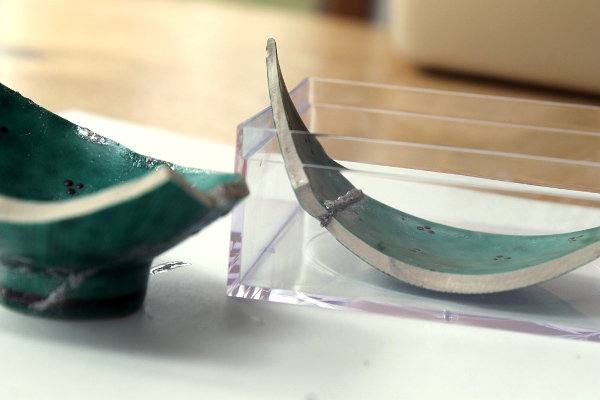
Another of the directions that gave me problems turned out to be the very first one where it said to ‘add a tiny hint of goldpowder and mix well.’ Those of you with a scientific bent will appreciate that a hint is not an easily defined measurement, nor do the directions tell you why it is only to be a hint. I had considered several reasons – economic, ease of clean up, ensuring that the powder lasted the same length of time as the tube of epoxy and probably a few more. What I hadn’t considered was that the powder keeps the glue from setting, allowing your pieces to break apart after 25 minutes of patient holding.
By now, there was pretty much nothing left that could go wrong… well, except for the vial that contained the steel powder cross-threading every time you closed it, so that when you opened it again, large quantities of minute steel dust covered everything within a 100 metre radius, any excess drips of epoxy tended to remove the glaze on the pot when removed and that the imperfect elements of kintsugi were vastly outnumbering the beautiful and I was starting to wonder why we hadn’t just superglued it together in the first place.
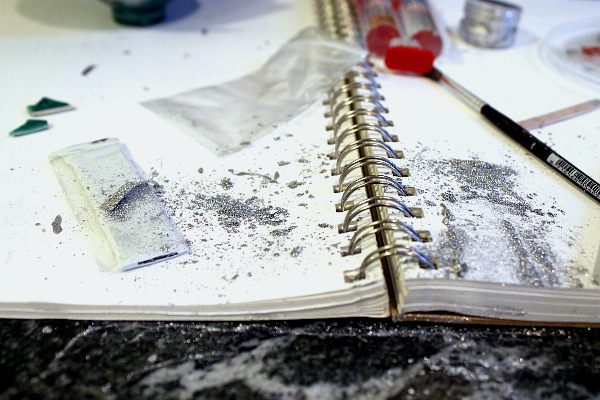
In the end, I don’t really know how I feel about the whole experience. I’m really disappointed in the process (and I’m a process artist so that really matters to me), I wish I’d practiced on something less precious before I started and since I haven’t had a chance to spend any time with the finished piece (flights to be caught and all that) I’m swinging wildly between operator error and the instructions and materials being the main point of failure.

There’s a lesson in that somewhere about how life isn’t required to provide complete resolutions, but I’m not sure I’m ready to absorb it yet.
